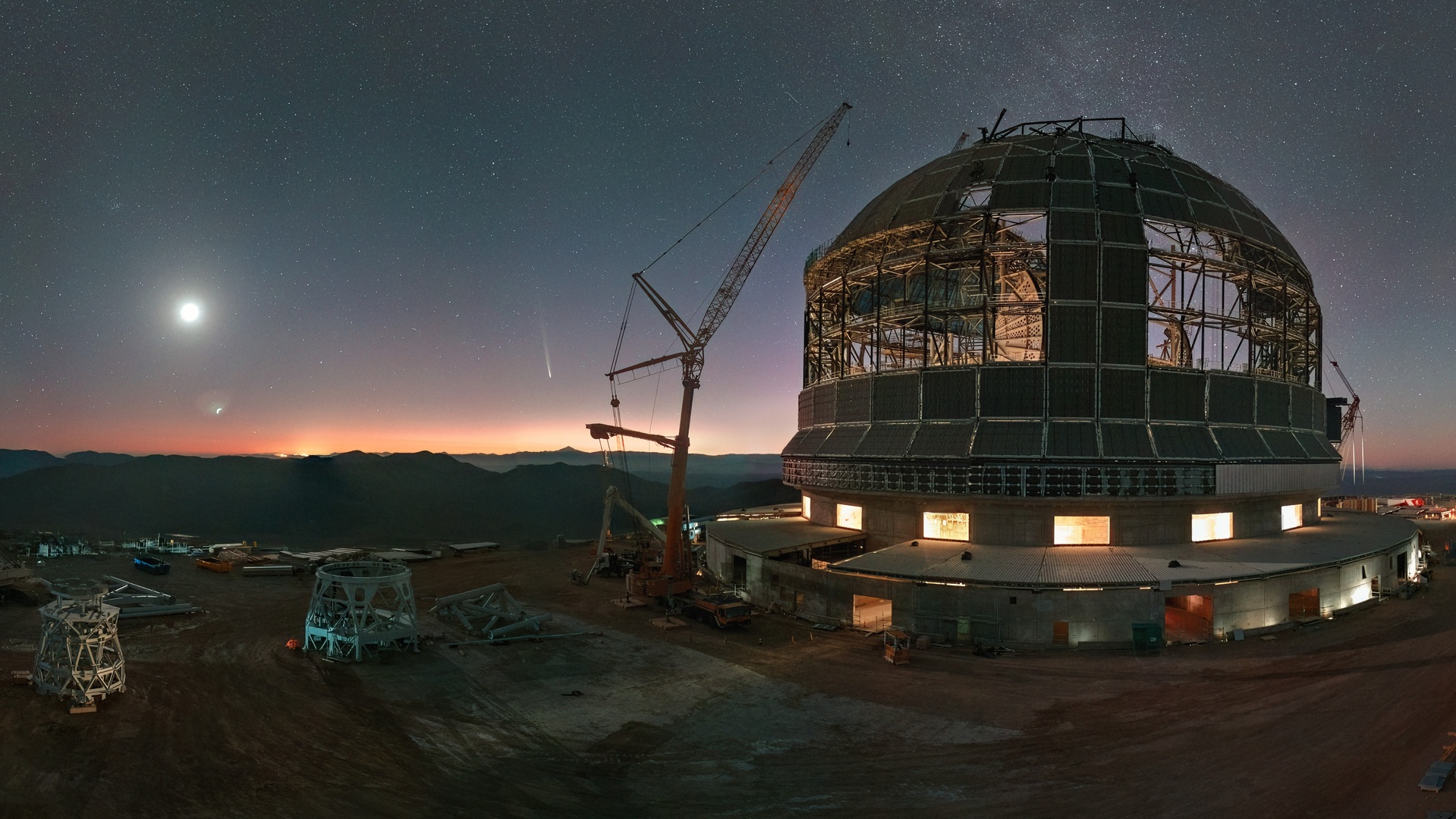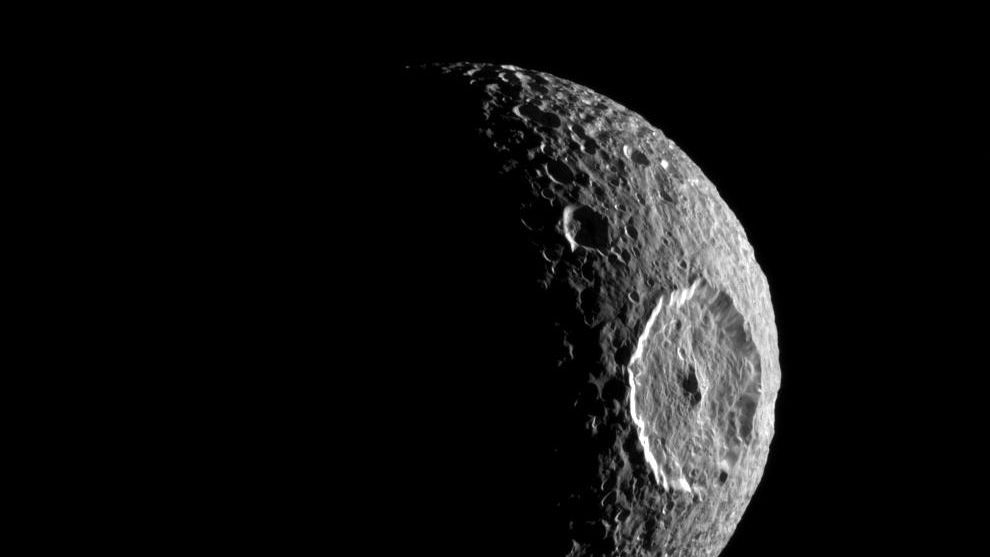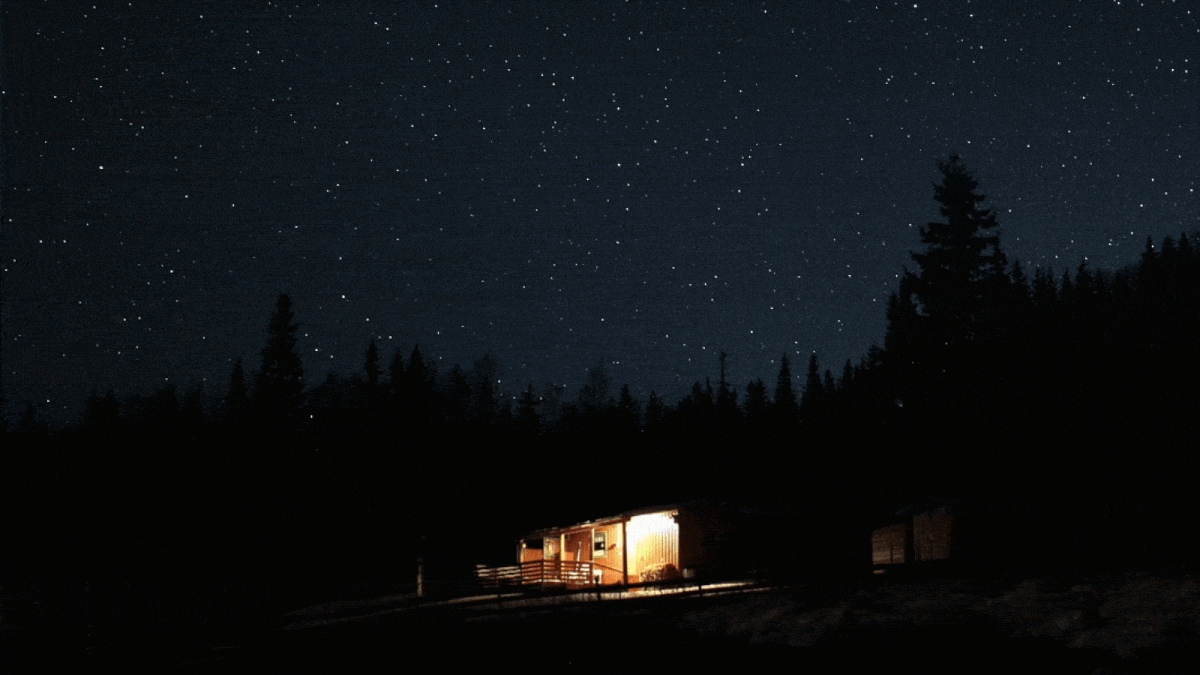Highest Resolution Images Of Pluto Reveal The Frozen Universe
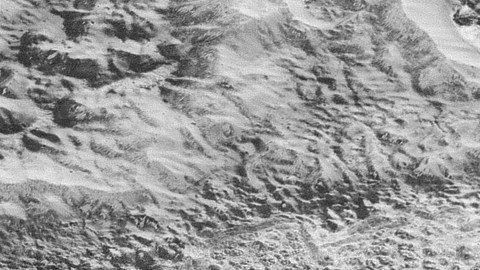
Ice mountains, frozen nitrogen flats and surprisingly familiar features show what the outermost worlds looks like.
“We’ve learned that the view of four inner rocky planets and four outer gas giants and one misfit Pluto is wrong. Now we understand Pluto’s context.”
–Alan Stern
When you photograph a distant world, you have two methods available to you, each with their own drawbacks:
- Photograph it from your current location, building as large a telescope and as sophisticated a camera as possible.
- Travel to that distant world and photograph it up close, then send the data back across interplanetary space.
We always try the first option to start with, because — perhaps surprisingly — it’s the cheapest and easiest.
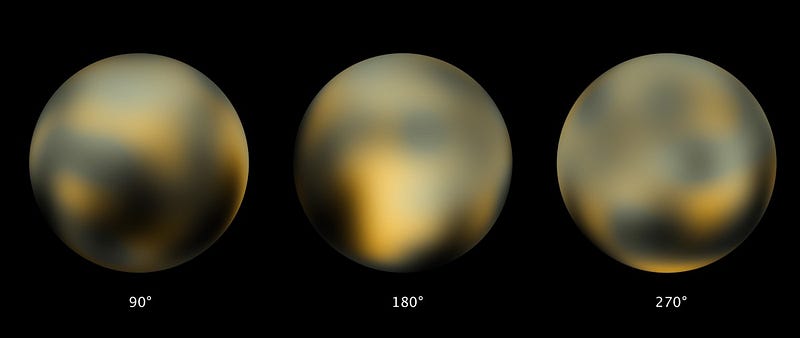
When we did that with Pluto, the first world discovered out beyond the orbit of Neptune, we were able to see some coarse details:
- differences in coloration and reflectivity,
- the shape of the world and its rough size,
- and the existence of an atmosphere,
but not much else. Even with the most advanced technology at our disposal, we needed to go there to make something better happen.

So we loaded up the New Horizons spacecraft, launched it the three billion miles (five billion km) to Pluto, and waited the nine years for it to arrive at its destination. It was able to measure everything we could measure here on Earth to much, much greater detail, including individual features down to resolutions of hundreds of feet per pixel (as opposed to hundreds of miles per pixel), the exact shape and size, and the composition of its atmosphere and of its icy terrain.
This includes the relative abundance of atmospheric gases and how they change with altitude, the various types of ice on the surface of the world itself, including CO2 ice (dry ice), H2O ice (water ice), CH4 ice (methane ice), and N2 ice (solid nitrogen). In other words, Pluto is cold!
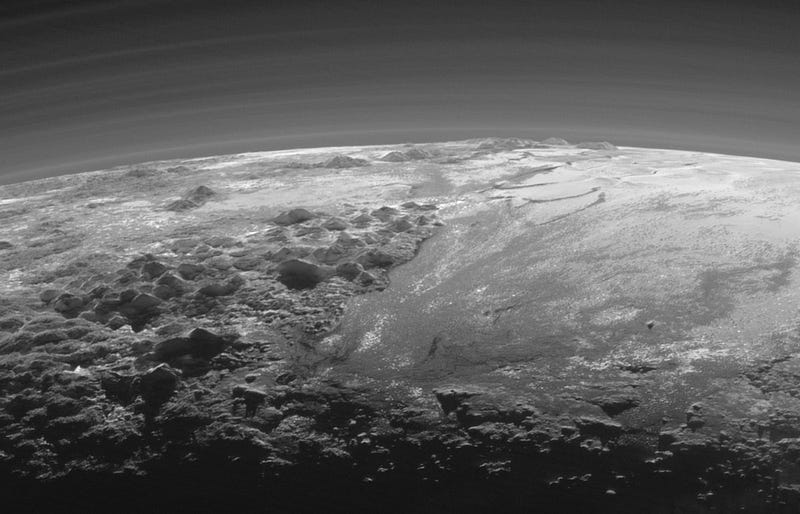
But being this far away meant that the data takes a long time to download. Even with New Horizons’ powerful transmitter, it’s only the largest radio dishes/receivers that can capture the signal, and even then, it’s going to take 16 months to receive all the data and high-resolution photos that New Horizons took.
That fly-by of Pluto was way back in July, however, and so we’re about a third of the way through that time. Earlier today, NASA released the very first of the highest-resolution images that were taken. There were three of them that have come out so far, and each one tells a unique part of the story of this icy world.
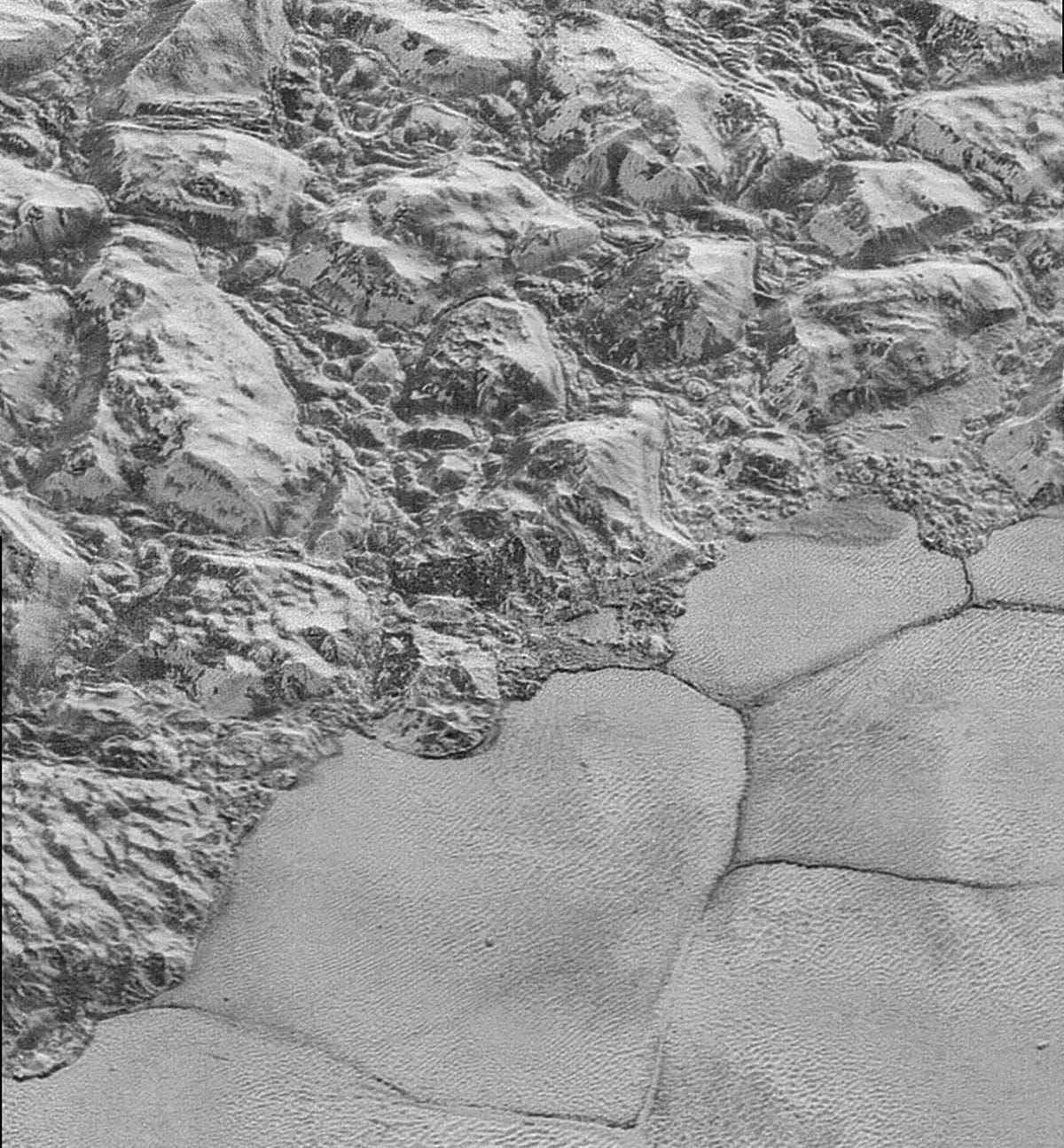
The “plains” region shown above — known unofficially as Sputnik planum — is made primarily of nitrogen-ice, which has a much colder melting/boiling point than water-ice, but is denser. The mountains “float” atop the nitrogen ice, and they themselves are made of water ice. As they rise to a height of 1.5 kilometers (nearly a mile) above the plains surface, they clearly take a dip far below the surface as well.
This is one of the major hints as to Pluto’s complex and active geology: the varied terrain that’s still changing even today!
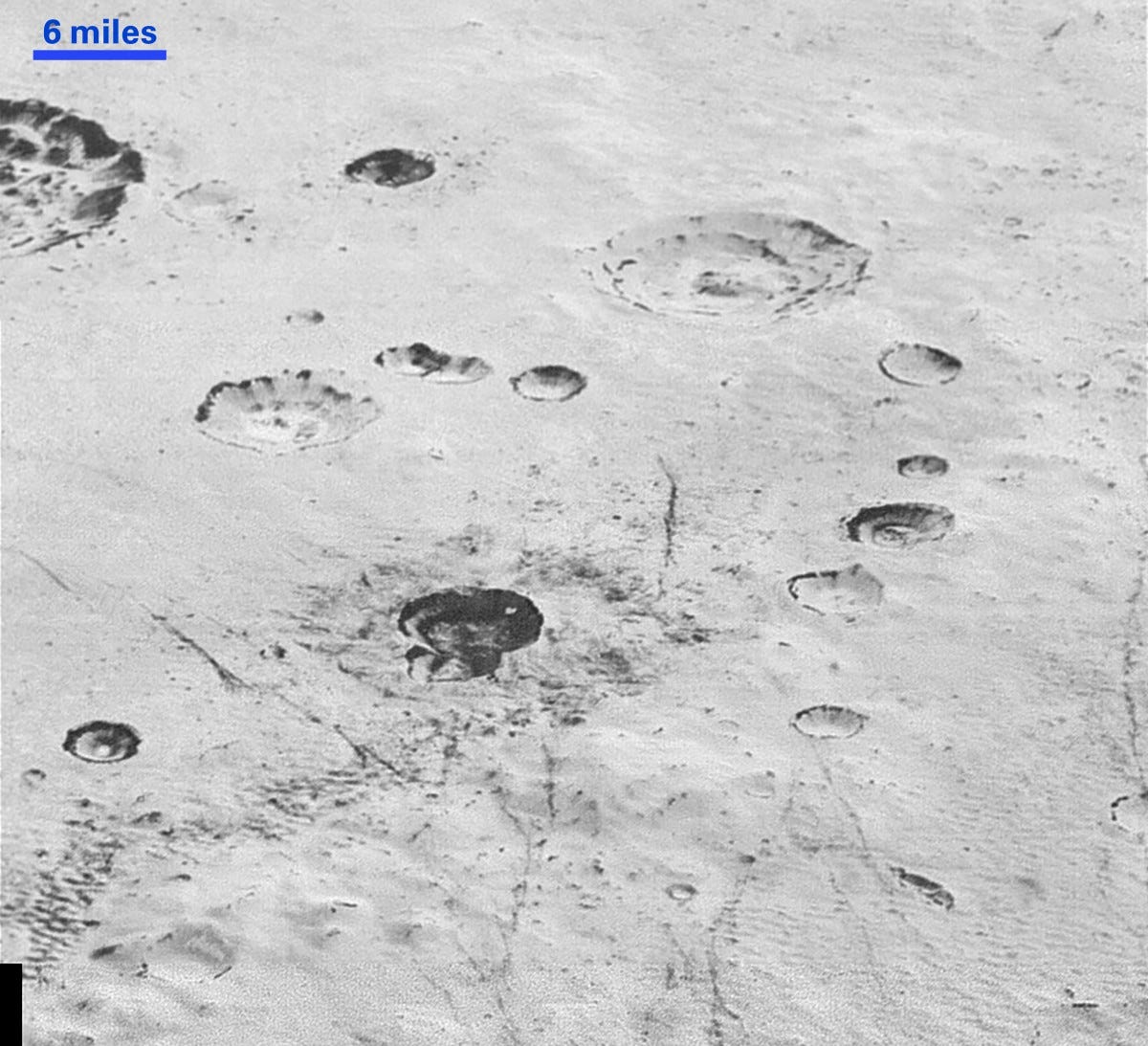
The highest-resolution images of craters reveal something that’s perhaps surprising: Pluto’s icy surface is layered, much like Earth’s sedimentary rocks. This tells us, again, that there’s active “layer” formation that occurs, and that this surface changes over time. What are the resurfacing events that occur, though? Does it rain/snow on Pluto? Looking into the depths of these craters — which were created by the impacts of other, smaller objects in the Kuiper belt — is a way to help reconstruct the geological history of this world. The science hasn’t come back from this yet, as the images and their data has yet to be analyzed, but this is one of the keys as to how we’ll figure it out.
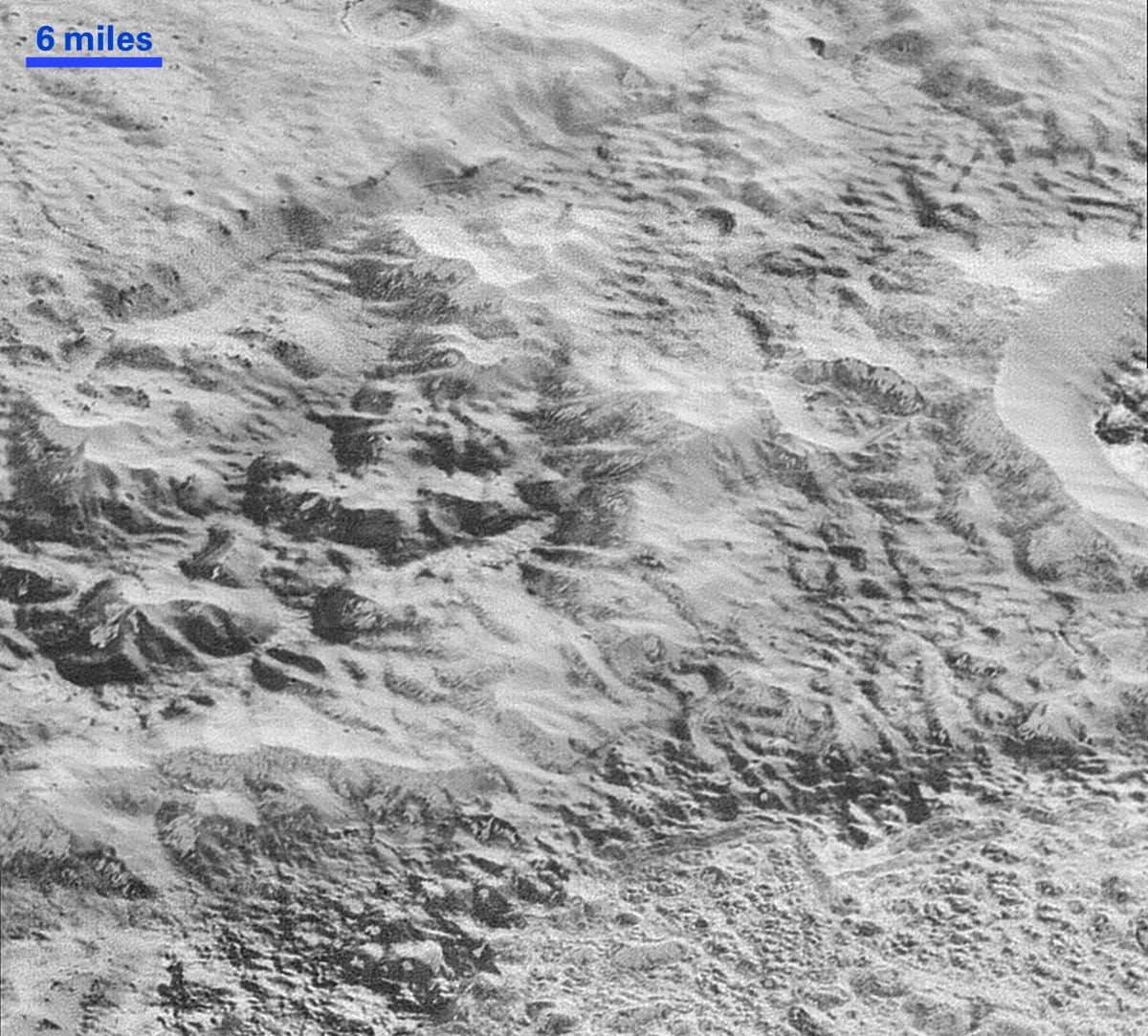
And finally, the topography above — which looks a bit like the badlands in South Dakota — show evidence of erosion and of faulting, teaching us that Pluto is likely tectonically active, and showing us that the features we see now are impermanent as well, destined to be eroded away. The most distant world ever examined up close has more in common with our own Earth than anyone ever anticipated!
Each bit is so important to the great cosmic story, because even though we don’t normally think about Pluto in these terms, it’s actually the prototype for the most common type of world in the Universe. Out beyond Neptune, Pluto’s frozen surface is so distant from the Sun that its temperature is below 77 Kelvin, meaning that all of these “volatile” molecules (carbon dioxide, water, methane, and molecular nitrogen) are stable in the solid phase, and will not be kicked off their home world. Our own Solar System — between the Kuiper belt and the Oort cloud — likely houses hundreds of spheroidal, icy dwarfs like Pluto, meaning there are hundreds of these worlds around every star.
What’s more: for every star out there, there are anywhere between hundreds to hundreds of thousands of these icy dwarfs wandering through interstellar space: the rogue, frozen planets of the Universe. Our voyage to Pluto gave us our first glimpse of the most common type of object with enough gravity to pull itself into a sphere in the entire Universe. This is just the tip of the literal cosmic iceberg. Our interstellar journey is at its intellectual beginning, and yet, this is another great leap forward.
Leave your comments on our forum, help Starts With A Bang! deliver more rewards on Patreon, and pre-order our first book, Beyond The Galaxy, today!

